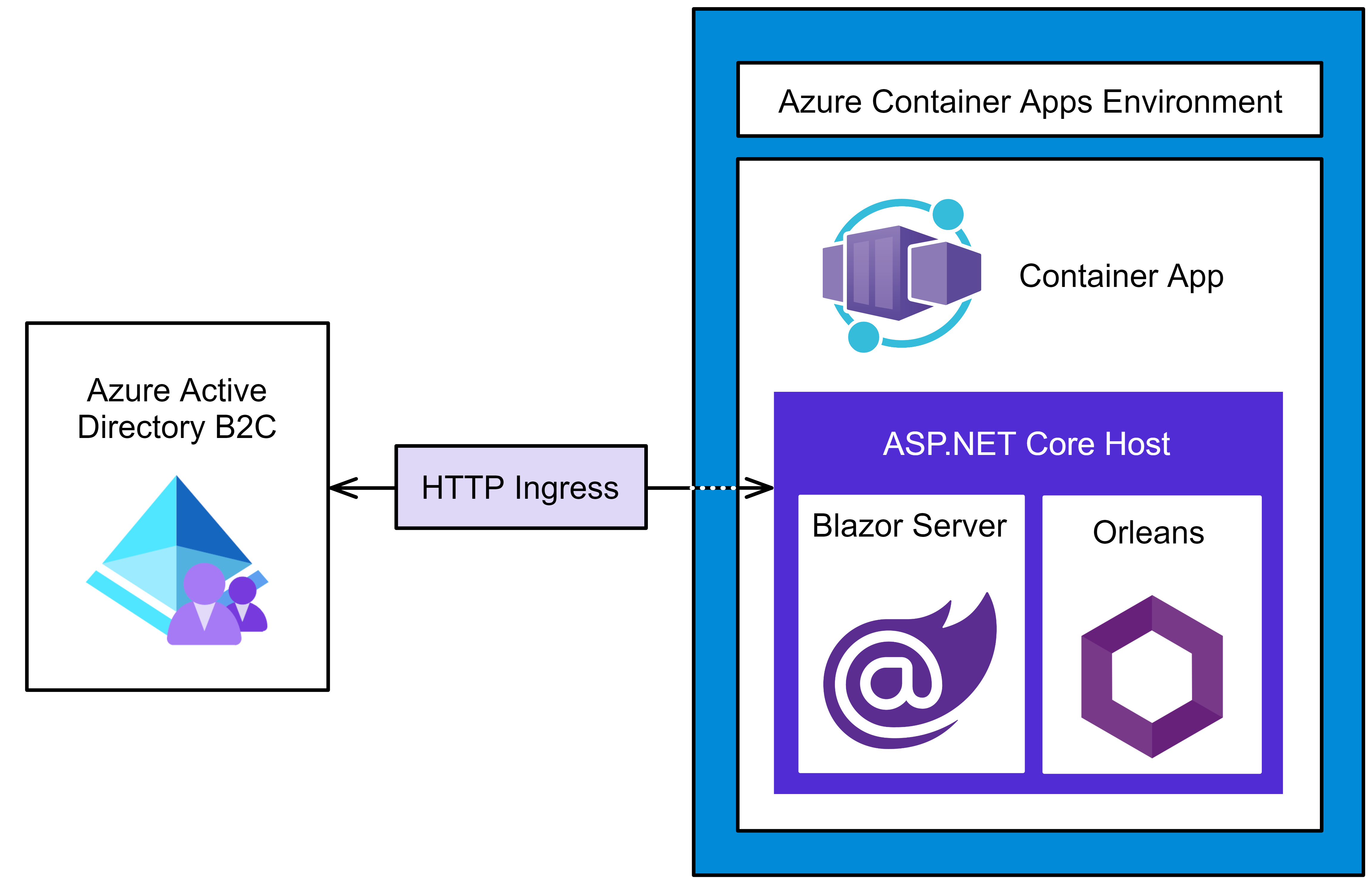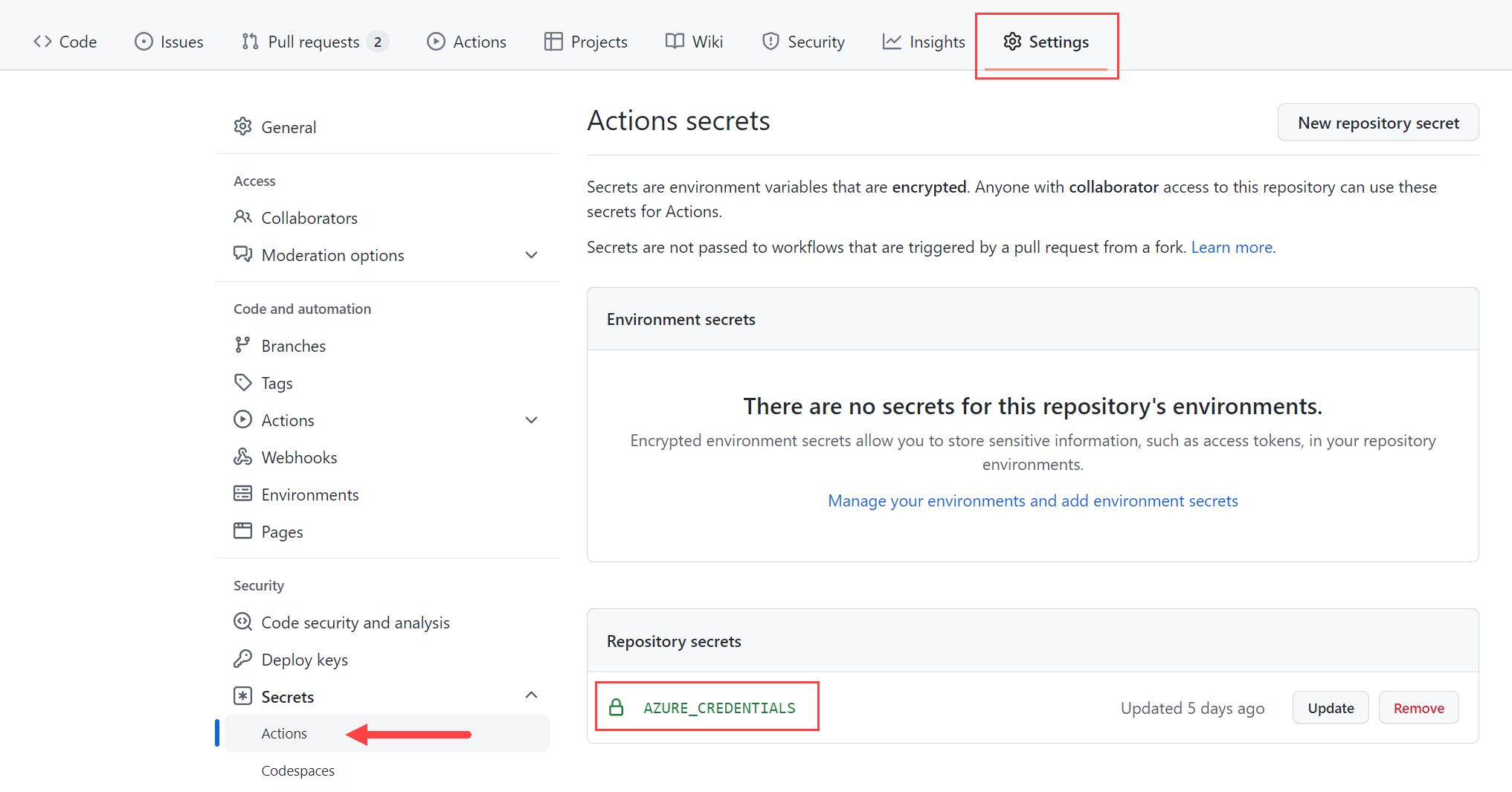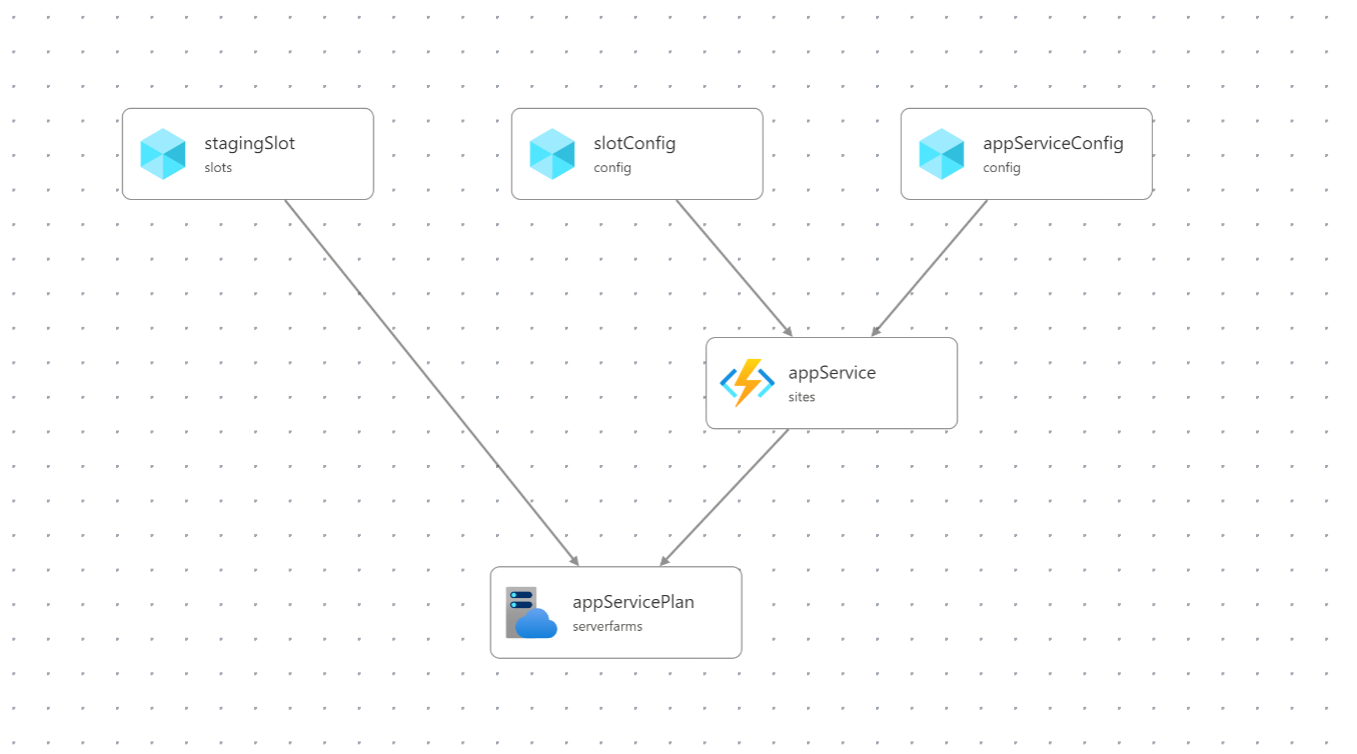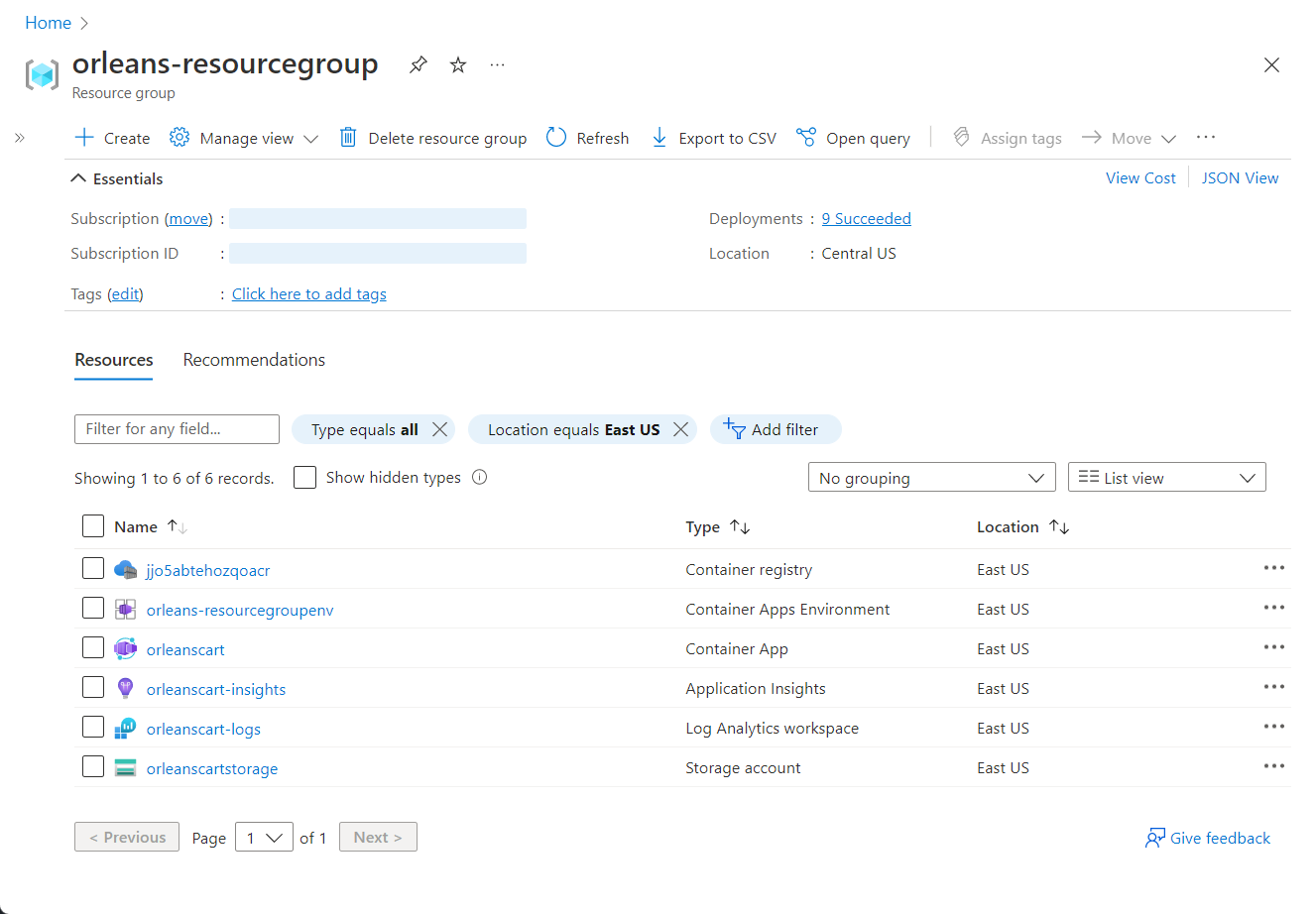Note
Access to this page requires authorization. You can try signing in or changing directories.
Access to this page requires authorization. You can try changing directories.
In this tutorial, learn how to deploy an example Orleans shopping cart application to Azure Container Apps. This tutorial expands the functionality of the sample Orleans shopping cart app, introduced in Deploy Orleans to Azure App Service. The sample app adds Azure Active Directory (AAD) business-to-consumer (B2C) authentication and deploys to Azure Container Apps.
Learn how to deploy using GitHub Actions, the .NET and Azure CLIs, and Azure Bicep. Additionally, learn how to configure the Container App's HTTP ingress.
In this tutorial, you learn how to:
- Deploy an Orleans application to Azure Container Apps
- Automate deployment using GitHub Actions and Azure Bicep
- Configure HTTP ingress
Prerequisites
- A GitHub account
- Read an introduction to Orleans
- The .NET 6 SDK
- The Azure CLI
- A .NET integrated development environment (IDE)
- Feel free to use Visual Studio or Visual Studio Code
Run the app locally
To run the app locally, fork the Azure Samples: Orleans shopping cart on Azure Container Apps repository and clone it to your local machine. Once cloned, open the solution in an IDE of your choice. If using Visual Studio, right-click the Orleans.ShoppingCart.Silo project, select Set As Startup Project, then run the app. Otherwise, run the app using the following .NET CLI command:
dotnet run --project Silo\Orleans.ShoppingCart.Silo.csproj
For more information, see dotnet run. With the app running, a landing page discusses the app's functionality. In the upper-right corner, a sign-in button is visible. Sign up for an account or sign in if one already exists. Once signed in, navigate around and test its capabilities. All app functionality when running locally relies on in-memory persistence and local clustering. It also uses the Bogus NuGet package to generate fake products. Stop the app either by selecting the Stop Debugging option in Visual Studio or by pressing Ctrl+C in the .NET CLI.
AAD B2C
While teaching authentication concepts is beyond the scope of this tutorial, learn how to Create an Azure Active Directory B2C tenant, and then Register a web app to consume it. For this shopping cart example app, register the resulting deployed Container Apps' URL in the B2C tenant. For more information, see ASP.NET Core Blazor authentication and authorization.
Important
After the Container App is deployed, register the app's URL in the B2C tenant. In most production scenarios, the app's URL only needs registration once, as it shouldn't change.
To help visualize how the app is isolated within the Azure Container Apps environment, see the following diagram:
In the preceding diagram, all inbound traffic to the app funnels through a secured HTTP ingress. The Azure Container Apps environment contains an app instance, and the app instance contains an ASP.NET Core host, exposing the Blazor Server and Orleans app functionality.
Deploy to Azure Container Apps
To deploy the app to Azure Container Apps, the repository uses GitHub Actions. Before this deployment can occur, a few Azure resources are needed, and the GitHub repository must be configured correctly.
Before deploying the app, create an Azure Resource Group (or you can use an existing one). To create a new Azure Resource Group, use one of the following articles:
Make note of the resource group name you choose; you need it later to deploy the app.
Create a service principal
To automate the app's deployment, you need to create a service principal. This is a Microsoft account that has permission to manage Azure resources on your behalf.
az ad sp create-for-rbac --sdk-auth --role Contributor \
--name "<display-name>" --scopes /subscriptions/<your-subscription-id>
The JSON credentials created look similar to the following, but with actual values for your client, subscription, and tenant:
{
"clientId": "<your client id>",
"clientSecret": "<your client secret>",
"subscriptionId": "<your subscription id>",
"tenantId": "<your tenant id>",
"activeDirectoryEndpointUrl": "https://login.microsoftonline.com/",
"resourceManagerEndpointUrl": "https://brazilus.management.azure.com",
"activeDirectoryGraphResourceId": "https://graph.windows.net/",
"sqlManagementEndpointUrl": "https://management.core.windows.net:8443/",
"galleryEndpointUrl": "https://gallery.azure.com",
"managementEndpointUrl": "https://management.core.windows.net"
}
Copy the output of the command into your clipboard, and continue to the next step.
Create a GitHub secret
GitHub provides a mechanism for creating encrypted secrets. The secrets you create are available for use in GitHub Actions workflows. You'll see how to use GitHub Actions to automate the app's deployment in conjunction with Azure Bicep. Bicep is a domain-specific language (DSL) that uses declarative syntax to deploy Azure resources. For more information, see What is Bicep?. Using the output from the Create a service principal step, you need to create a GitHub secret named AZURE_CREDENTIALS with the JSON-formatted credentials.
Within your GitHub repository, select Settings > Secrets > Create a new secret. Enter the name AZURE_CREDENTIALS and paste the JSON credentials from the previous step into the Value field.
For more information, see GitHub: Encrypted Secrets.
Prepare for Azure deployment
Package the app for deployment. In the Orleans.ShoppingCart.Silos project, a Target element is defined that runs after the Publish step. This target zips the publish directory into a silo.zip file:
<Target Name="ZipPublishOutput" AfterTargets="Publish">
<Delete Files="$(ProjectDir)\..\silo.zip" />
<ZipDirectory SourceDirectory="$(PublishDir)" DestinationFile="$(ProjectDir)\..\silo.zip" />
</Target>
There are many ways to deploy a .NET app to Azure Container Apps. In this tutorial, use GitHub Actions, Azure Bicep, and the .NET and Azure CLIs. Consider the ./github/workflows/deploy.yml file in the root of the GitHub repository:
name: Deploy to Azure Container Apps
on:
push:
branches:
- main
env:
UNIQUE_APP_NAME: orleanscart
SILO_IMAGE_NAME: orleanscart-silo
AZURE_RESOURCE_GROUP_NAME: orleans-resourcegroup
AZURE_RESOURCE_GROUP_LOCATION: eastus
jobs:
build-and-deploy:
runs-on: ubuntu-latest
steps:
- uses: actions/checkout@v3
- name: Setup .NET 6.0
uses: actions/setup-dotnet@v3
with:
dotnet-version: 6.0.x
- name: .NET publish shopping cart app
run: dotnet publish ./Silo/Orleans.ShoppingCart.Silo.csproj --configuration Release
- name: Login to Azure
uses: azure/login@v1
with:
creds: ${{ secrets.AZURE_CREDENTIALS }}
- name: Flex ACR Bicep
run: |
az deployment group create \
--resource-group ${{ env.AZURE_RESOURCE_GROUP_NAME }} \
--template-file '.github/workflows/flex/acr.bicep' \
--parameters location=${{ env.AZURE_RESOURCE_GROUP_LOCATION }}
- name: Get ACR Login Server
run: |
ACR_NAME=$(az deployment group show -g ${{ env.AZURE_RESOURCE_GROUP_NAME }} -n acr \
--query properties.outputs.acrName.value | tr -d '"')
echo "ACR_NAME=$ACR_NAME" >> $GITHUB_ENV
ACR_LOGIN_SERVER=$(az deployment group show -g ${{ env.AZURE_RESOURCE_GROUP_NAME }} -n acr \
--query properties.outputs.acrLoginServer.value | tr -d '"')
echo "ACR_LOGIN_SERVER=$ACR_LOGIN_SERVER" >> $GITHUB_ENV
- name: Prepare Docker buildx
uses: docker/setup-buildx-action@v1
- name: Login to ACR
run: |
access_token=$(az account get-access-token --query accessToken -o tsv)
refresh_token=$(curl https://${{ env.ACR_LOGIN_SERVER }}/oauth2/exchange -v \
-d "grant_type=access_token&service=${{ env.ACR_LOGIN_SERVER }}&access_token=$access_token" | jq -r .refresh_token)
# The null GUID 0000... tells the container registry that this is an ACR refresh token during the login flow
docker login -u 00000000-0000-0000-0000-000000000000 \
--password-stdin ${{ env.ACR_LOGIN_SERVER }} <<< "$refresh_token"
- name: Build and push Silo image to registry
uses: docker/build-push-action@v2
with:
push: true
tags: ${{ env.ACR_LOGIN_SERVER }}/${{ env.SILO_IMAGE_NAME }}:${{ github.sha }}
file: Silo/Dockerfile
- name: Flex ACA Bicep
run: |
az deployment group create \
--resource-group ${{ env.AZURE_RESOURCE_GROUP_NAME }} \
--template-file '.github/workflows/flex/main.bicep' \
--parameters location=${{ env.AZURE_RESOURCE_GROUP_LOCATION }} \
appName=${{ env.UNIQUE_APP_NAME }} \
acrName=${{ env.ACR_NAME }} \
repositoryImage=${{ env.ACR_LOGIN_SERVER }}/${{ env.SILO_IMAGE_NAME }}:${{ github.sha }} \
--debug
- name: Get Container App URL
run: |
ACA_URL=$(az deployment group show -g ${{ env.AZURE_RESOURCE_GROUP_NAME }} \
-n main --query properties.outputs.acaUrl.value | tr -d '"')
echo $ACA_URL
- name: Logout of Azure
run: az logout
The preceding GitHub workflow does the following:
- Publishes the shopping cart app as a zip file using the dotnet publish command.
- Logs in to Azure using credentials from the Create a service principal step.
- Evaluates the acr.bicep file and starts a deployment group using az deployment group create.
- Gets the Azure Container Registry (ACR) login server from the deployment group.
- Logs in to ACR using the repository's
AZURE_CREDENTIALSsecret. - Builds and publishes the silo image to the ACR.
- Evaluates the main.bicep file and starts a deployment group using az deployment group create.
- Deploys the silo.
- Logs out of Azure.
The workflow triggers on a push to the main branch. For more information, see GitHub Actions and .NET.
Tip
If you encounter issues when running the workflow, you might need to verify that the service principal has all the required provider namespaces registered. The following provider namespaces are required:
Microsoft.AppMicrosoft.ContainerRegistryMicrosoft.InsightsMicrosoft.OperationalInsightsMicrosoft.Storage
For more information, see Resolve errors for resource provider registration.
Azure imposes naming restrictions and conventions for resources. Update the values in the deploy.yml file for the following environment variables:
UNIQUE_APP_NAMESILO_IMAGE_NAMEAZURE_RESOURCE_GROUP_NAMEAZURE_RESOURCE_GROUP_LOCATION
Set these values to your unique app name and your Azure resource group name and location.
For more information, see Naming rules and restrictions for Azure resources.
Explore the Bicep templates
When the az deployment group create command runs, it evaluates a given .bicep file reference. This file contains declarative information detailing the Azure resources to deploy. Think of this step as provisioning all resources for deployment.
Important
If you're using Visual Studio Code, the Bicep authoring experience is improved when using the Bicep Extension.
The first Bicep file evaluated is the acr.bicep file. This file contains the Azure Container Registry (ACR) login server resource details:
param location string = resourceGroup().location
resource acr 'Microsoft.ContainerRegistry/registries@2021-09-01' = {
name: toLower('${uniqueString(resourceGroup().id)}acr')
location: location
sku: {
name: 'Basic'
}
properties: {
adminUserEnabled: true
}
}
output acrLoginServer string = acr.properties.loginServer
output acrName string = acr.name
This Bicep file outputs the ACR login server and corresponding name. The next Bicep file encountered contains more than just a single resource. Consider the main.bicep file, which consists primarily of delegating module definitions:
param appName string
param acrName string
param repositoryImage string
param location string = resourceGroup().location
resource acr 'Microsoft.ContainerRegistry/registries@2021-09-01' existing = {
name: acrName
}
module env 'environment.bicep' = {
name: 'containerAppEnvironment'
params: {
location: location
operationalInsightsName: '${appName}-logs'
appInsightsName: '${appName}-insights'
}
}
var envVars = [
{
name: 'APPINSIGHTS_INSTRUMENTATIONKEY'
value: env.outputs.appInsightsInstrumentationKey
}
{
name: 'APPLICATIONINSIGHTS_CONNECTION_STRING'
value: env.outputs.appInsightsConnectionString
}
{
name: 'ORLEANS_AZURE_STORAGE_CONNECTION_STRING'
value: storageModule.outputs.connectionString
}
{
name: 'ASPNETCORE_FORWARDEDHEADERS_ENABLED'
value: 'true'
}
]
module storageModule 'storage.bicep' = {
name: 'orleansStorageModule'
params: {
name: '${appName}storage'
location: location
}
}
module siloModule 'container-app.bicep' = {
name: 'orleansSiloModule'
params: {
appName: appName
location: location
containerAppEnvironmentId: env.outputs.id
repositoryImage: repositoryImage
registry: acr.properties.loginServer
registryPassword: acr.listCredentials().passwords[0].value
registryUsername: acr.listCredentials().username
envVars: envVars
}
}
output acaUrl string = siloModule.outputs.acaUrl
The preceding Bicep file does the following:
- References an
existingACR resource. For more information, see Azure Bicep: Existing resources. - Defines a
module envthat delegates to the environment.bicep definition file. - Defines a
module storageModulethat delegates to the storage.bicep definition file. - Declares several shared
envVarsused by the silo module. - Defines a
module siloModulethat delegates to the container-app.bicep definition file. - Outputs the ACA URL (potentially used to update an existing AAD B2C app registration's redirect URI).
The main.bicep delegates to several other Bicep files. The first is the environment.bicep file:
param operationalInsightsName string
param appInsightsName string
param location string
resource appInsights 'Microsoft.Insights/components@2020-02-02' = {
name: appInsightsName
location: location
kind: 'web'
properties: {
Application_Type: 'web'
WorkspaceResourceId: logs.id
}
}
resource logs 'Microsoft.OperationalInsights/workspaces@2021-06-01' = {
name: operationalInsightsName
location: location
properties: {
retentionInDays: 30
features: {
searchVersion: 1
}
sku: {
name: 'PerGB2018'
}
}
}
resource env 'Microsoft.App/managedEnvironments@2022-03-01' = {
name: '${resourceGroup().name}env'
location: location
properties: {
appLogsConfiguration: {
destination: 'log-analytics'
logAnalyticsConfiguration: {
customerId: logs.properties.customerId
sharedKey: logs.listKeys().primarySharedKey
}
}
}
}
output id string = env.id
output appInsightsInstrumentationKey string = appInsights.properties.InstrumentationKey
output appInsightsConnectionString string = appInsights.properties.ConnectionString
This Bicep file defines the Azure Log Analytics and Application Insights resources. The appInsights resource is a web type, and the logs resource is a PerGB2018 type. Both appInsights and logs resources are provisioned in the resource group's location. The appInsights resource links to the logs resource via the WorkspaceResourceId property. This Bicep file defines three outputs used later by the Container Apps module. Next, consider the storage.bicep file:
param name string
param location string
resource storage 'Microsoft.Storage/storageAccounts@2021-08-01' = {
name: name
location: location
kind: 'StorageV2'
sku: {
name: 'Standard_LRS'
}
}
var key = listKeys(storage.name, storage.apiVersion).keys[0].value
var protocol = 'DefaultEndpointsProtocol=https'
var accountBits = 'AccountName=${storage.name};AccountKey=${key}'
var endpointSuffix = 'EndpointSuffix=${environment().suffixes.storage}'
output connectionString string = '${protocol};${accountBits};${endpointSuffix}'
The preceding Bicep file defines the following:
- Two parameters for the resource group name and the app name.
- The
resource storagedefinition for the storage account. - A single
outputconstructing the connection string for the storage account.
The last Bicep file is the container-app.bicep file:
param appName string
param location string
param containerAppEnvironmentId string
param repositoryImage string = 'mcr.microsoft.com/azuredocs/containerapps-helloworld:latest'
param envVars array = []
param registry string
param registryUsername string
@secure()
param registryPassword string
resource containerApp 'Microsoft.App/containerApps@2022-03-01' = {
name: appName
location: location
properties: {
managedEnvironmentId: containerAppEnvironmentId
configuration: {
activeRevisionsMode: 'multiple'
secrets: [
{
name: 'container-registry-password'
value: registryPassword
}
]
registries: [
{
server: registry
username: registryUsername
passwordSecretRef: 'container-registry-password'
}
]
ingress: {
external: true
targetPort: 80
}
}
template: {
revisionSuffix: uniqueString(repositoryImage, appName)
containers: [
{
image: repositoryImage
name: appName
env: envVars
}
]
scale: {
minReplicas: 1
maxReplicas: 1
}
}
}
}
output acaUrl string = containerApp.properties.configuration.ingress.fqdn
The aforementioned Visual Studio Code extension for Bicep includes a visualizer. All these Bicep files are visualized as follows:
Summary
As source code is updated and changes are pushed to the main branch of the repository, the deploy.yml workflow runs. It provisions the Azure resources defined in the Bicep files and deploys the application. Revisions are automatically registered in the Azure Container Registry.
In addition to the visualizer from the Bicep extension, the Azure portal resource group page looks similar to the following example after provisioning and deploying the application:




